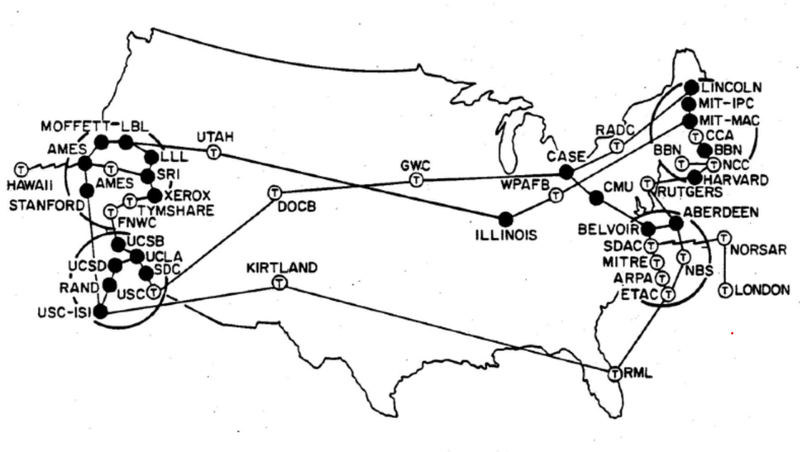
I launched this new series to help people learn Web3. Web3 is not really a new idea but a progress idea builds on the top of Web2. And there is no way you can learn Web3 by ignoring Web2. There are many hypes around the Web3 but it is really just hype. The true Web3 is many decades away from us. However, it does not mean we will wait for Web3 to just come to us. Rather, we should explore Web2 and see how it can further improve through a Web3 idea.
This article will just touch a basis about the internet and the website.
TL;DR
What is the Internet
How the Internet Works
Internet vs. Web
How does the Web Work
How It Matters in Web3
What is the Internet

The idea of the internet came from the project ARPANET. A project connects all university computers together and shares their research knowledge. But there is a rumor to believe the government was trying to build a survival network to be resistant to nuclear war. It wasn’t available until officially decommissioning in 1990 and the internet started to flourish without potential threats from nuclear war. But the technology matured during the 70s and 80s as known as TCP/IP or Transmission Control Protocol and Internet Protocol.
How the Internet Works
The internet is a way to communicate between two computers. TCP/IP has a two-layer program. The higher layer TCP disassembles the message into little pieces called “data packets” and is transmitted into the internet to be re-assembled by the receiving computer’s TCP back into the original message. The lower layer IP is an “address manager” and gets each data packet to the correct destination. IP addresses are checked by every computer in a network to make sure messages are forwarded as needed.
Internet vs. Web
The internet is different from the Web. Although people use them interchangeably, the internet is the infrastructure that runs the web. The World Wide Web was invented by Tim Berners-Lee in 1989. You need a web browser to view information from the web.
How does the Web Work
Thinking about when you are surfing the web.
Step 1: Connect your internet
You will turn on your modem to connect your computer to the internet service provider. You will need the IP address ready to receive information from the internet service provider through TCP.
Step 2: Enter a web address into the browser
You will type a web address into the browser called URL or Uniform Resource Locator. Then you will process and push the internet service provider to provide data of such address you input and the browser looks up the IP address for the domain name through DNS or Domain Name Server which translates the text into a number of IP addresses so that it can be easier to search.
Step 3: The browser sends an HTTP request to the target server to send a copy of the web page
HTTP or Hypertext Transfer Protocol is a language used for internet communication and is being encrypted.
Step 4: Server approves the request and provides data
Once the server receives the request and decrypts the request message upon approval, it will transmit data into your computer through a browser.
Step 5: Load the data
Then, your browser will through the TCP/IP process download the data and reassemble packets to present messages into your browser.
How It Matters in Web3
The above steps can easily translate into the process of the wallet with only a simple twist: instead of one-to-one communication from the internet, the crypto internet runs on multiple nodes.
Step 1: Connect your internet
You will turn on your modem to connect your computer to the internet service provider. You will need the IP address ready to receive information from the internet service provider through TCP.
Step 2: Enter a wallet address into the browser
You will activate your wallet with your private key and input the public key address you want to send to. Then click send.
Step 3: The browser sends a request to the crypto network and all nodes work to validate the transaction
Each block of a transaction is an unspent transaction output or UTXO. All nodes will work to validate the previous block to make sure such transaction does not duplicate in the previous records as the process to validate the transaction. Of course, validators will compete with each other to win this type of work known as a mining process and to win incentives to complete such work.
Step 4: Miner approves the request and completes the transaction
Once miners confirm the transaction, it will be included in the block as the record and broadcast in the blockchain. Assume every condition has been met and a security check is passed (private key signature).
Step 5: Post the transaction
Then, you can find your transaction post in the blockchain and mark it as a success. The party who is supposed to receive the transaction will receive it.
In conclusion
You can easily imagine how the crypto and blockchain work to resemble how the internet and web work.
The next topic I will touch on is server and browser to blockchain and wallet.
Follow me here
Disclosure: The article was written by a delusional author who is possibly a nut job without any questions whatsoever about expertise in the subject matters. You should not believe any words this author wrote or you may experience similar symptoms or even possibly become a nut job.
Resource
https://en.wikipedia.org/wiki/ARPANET
https://www.bigcommerce.com/ecommerce-answers/what-is-tcp-ip/
https://en.wikipedia.org/wiki/Tim_Berners-Lee
https://www.hp.com/us-en/shop/tech-takes/how-does-the-internet-work
Comments